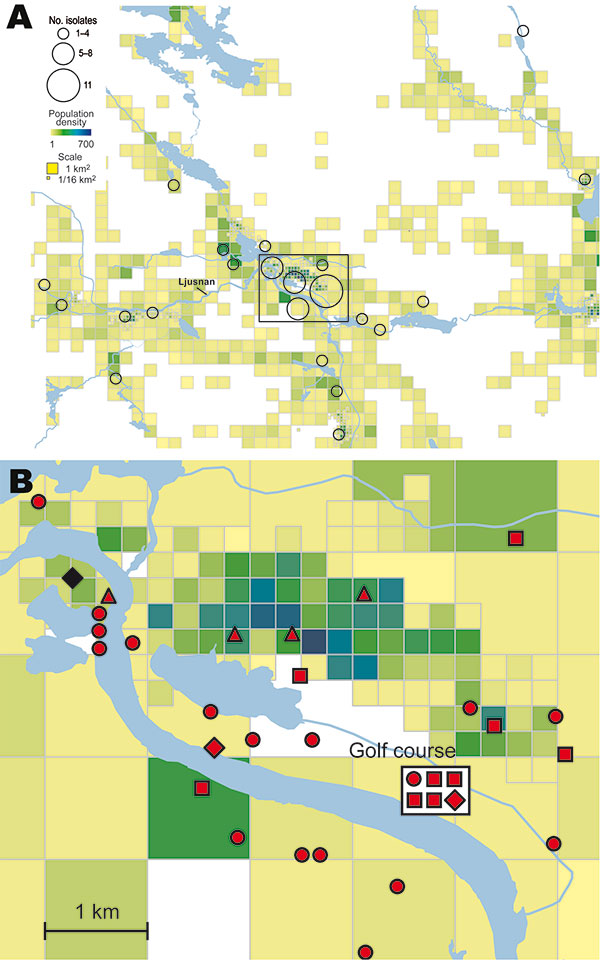Volume 15, Number 12—December 2009
Research
Landscape Epidemiology of Tularemia Outbreaks in Sweden
Figure 2

Figure 2. A) Spatial distribution of 56 places of tularemia transmission in Ljusdal, Sweden, 1995–2005, overlaid on a map with color-coded demographic data based on residential addresses. B) Disease cluster in an area of 25 km2 along the Ljusnan River in Ljusdal. Reported places of disease transmission and corresponding bacterial genotypes are shown. The 33 Francisella tularensis isolates belong to genetic group 1e and are of genotype ID 15 (red) or genotype ID 16 (black). Place of disease transmission was reported to be certain (circle), probable (square), or possible (diamond); patient residency was used when transmission data was unavailable (triangle).
Page created: December 09, 2010
Page updated: December 09, 2010
Page reviewed: December 09, 2010
The conclusions, findings, and opinions expressed by authors contributing to this journal do not necessarily reflect the official position of the U.S. Department of Health and Human Services, the Public Health Service, the Centers for Disease Control and Prevention, or the authors' affiliated institutions. Use of trade names is for identification only and does not imply endorsement by any of the groups named above.